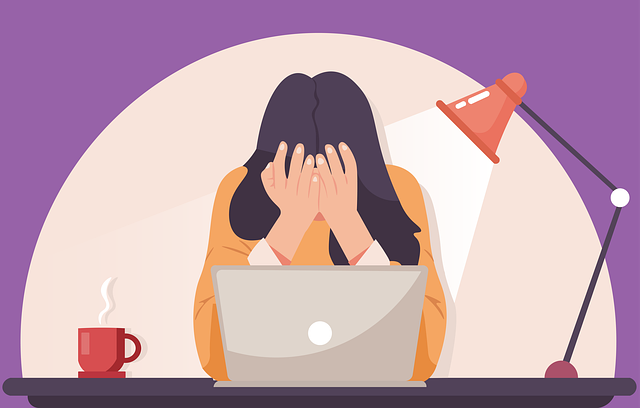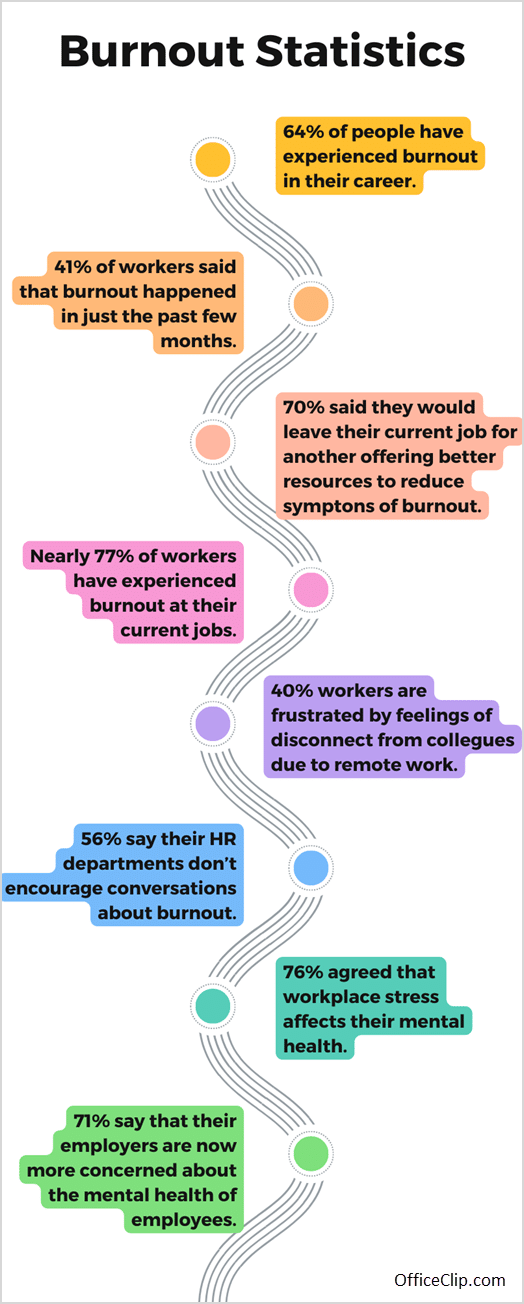This blog article is a summary of a detailed article on: How to minimize Employee burnout?
Employee burnout is a serious issue that can negatively affect employees and businesses. The article discusses the causes and symptoms of burnout and how to prevent and address it.

What is Burnout?
Burnout is a state of exhaustion, affecting your physical and mental energy, making even routine tasks challenging. It can also lead to persistent stress and fatigue, impacting overall well-being.
Are you struggling with daily tasks due to stress and exhaustion? Take this quiz to see if you’re experiencing the symptoms!
Free Template to measure Burnout
Burnout Statistics:

Key causes of burnout:
- Stressful work environments: This can include factors such as long hours, heavy workloads, and lack of support from management.
- Lack of work-life balance: Employees who lack time for their personal lives are more likely to experience burnout.
- Poor communication and leadership: If employees don’t feel like they are being heard or supported by their managers, they are more likely to feel burned out.
- Inability to disconnect: Constant interruptions during remote work through text, emails and phone calls creates constant pressure to complete the work.
Symptoms of burnout:
- Lack of motivation at work
- Disengagement
- Not able to coordinate with team members
- Procrastination
- Withdrawal or isolation
- Frequent illness
- Reduced performance
- Getting a sense of failure or self-doubt
Negative impacts of burnout:
- Decreased productivity: Stressed and exhausted employees are less likely to be productive at work.
- Increased absenteeism: Burned-out employees are more likely to miss work.
- Health problems: It can lead to many health problems, including physical and mental health issues like depression, anxiety, fatigue, obesity, diabetes, insomnia, etc.
What businesses can do to prevent and address burnout?
- Create a supportive work environment: This includes providing employees with resources and support and ensuring they feel valued.
- Promote work-life balance: Encourage employees to take breaks and disconnect from work outside of work hours.
- Communicate effectively: Ensure employees understand their roles and responsibilities clearly and feel they have a voice in the organization.
- Offer mental health resources: Provide employees access to mental health resources, such as counseling or employee assistance programs.
Simple strategies for employees to avoid burnout:
- Work-life balance: Set boundaries between work and personal time. Also, proper planning and time management will create a work-life balance.
- Learn to say “no”: Don’t overload yourself. Prioritize your tasks and politely decline additional responsibility if they affect your well-being.
- Take breaks: Taking short breaks throughout the day will help to refresh and focus better.
- Get enough sleep: Sleep for atleast 6 hours and relax in between work hours.
- Exercise regularly: Exercise and meditation helps to fight mental exhaustion and increase productivity.
- Discuss: Share and discuss your problems with family or friends to reduce stress and find solutions. If required seek professional help.
Businesses can create a happier and more productive workforce by taking steps to prevent and address burnout.
Data source:
Deepa Kapoor is an online writer for small businesses. She loves to write on the advancements of new technologies and how it affects our lives. She always explores ways to make small businesses more profitable. When not writing, she enjoys reading books and cooking exotic traditional food.

